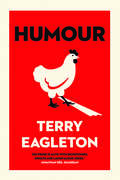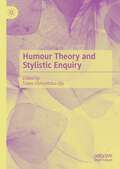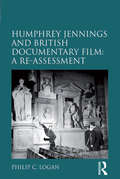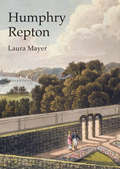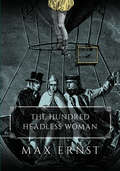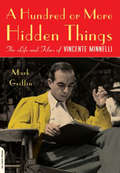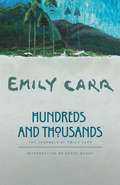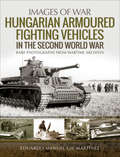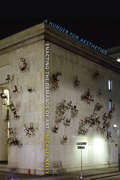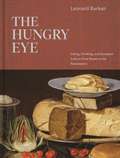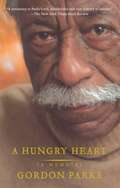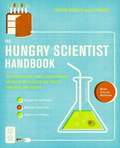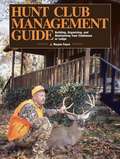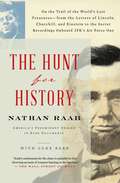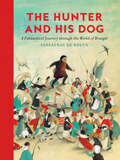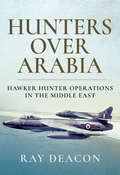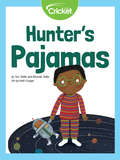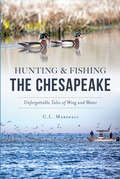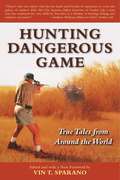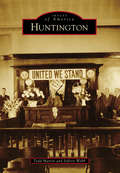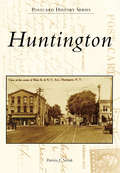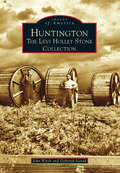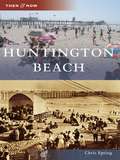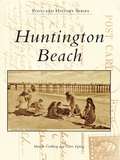- Table View
- List View
Humour
by Terry EagletonA compelling guide to the fundamental place of humour and comedy within Western culture—by one of its greatest exponents Written by an acknowledged master of comedy, this study reflects on the nature of humour and the functions it serves. Why do we laugh? What are we to make of the sheer variety of laughter, from braying and cackling to sniggering and chortling? Is humour subversive, or can it defuse dissent? Can we define wit? Packed with illuminating ideas and a good many excellent jokes, the book critically examines various well-known theories of humour, including the idea that it springs from incongruity and the view that it reflects a mildly sadistic form of superiority to others. Drawing on a wide range of literary and philosophical sources, Terry Eagleton moves from Aristotle and Aquinas to Hobbes, Freud, and Bakhtin, looking in particular at the psychoanalytical mechanisms underlying humour and its social and political evolution over the centuries.
Humour Theory and Stylistic Enquiry
by Taiwo Oloruntoba-OjuThis edited book brings together scholarly chapters on linguistic aspects of humour in literary and non-literary domains and contexts in different parts of the world. Previous scholarly engagements and theoretical postulations on humour and the comic provide veritable resources for reexamining the relationship between linguistic elements and comic sensations on the one hand, and the validity of interpretive humour stylistics on the other hand. Renowned Stylistics scholars, such as Michael Toolan, who writes the volume’s foreword against the backdrop of nearly four decades of scholarly engagement with stylistics, and Katie Wales, who in this volume engages with Charles Dickens, one of the most eminent satirists in English literature, as well as many other European and African authors who have worked ceaselessly in the area of humour and language, weigh in on the topic of language and humour in this volume. Together, they provide a variety of interesting perspectives on the topic, deploying different textual sources from different media and from different regions of the world. Part of the book’s offering includes integrative stylistic approaches to humour in African, European and American written texts, examinations of social media and political humour in Nigeria, Cameroon and Zimbabwe, pragmatics and humorous stance-taking, incongruity as comedy in works of fiction, and a unified levels of linguistic analysis approach to the investigation of humour. This book will be of interest to academics and students of Linguistics, Stylistics, Communications and Media Studies, and Humour Studies. Taiwo Oloruntoba-Oju is a Professor in the Department of English at the University of Ilorin in Nigeria
Humphrey Jennings and British Documentary Film: A Re-assessment
by Philip C. LoganHumphrey Jennings ranks amongst the greatest film makers of twentieth century Britain. Although a relatively unknown figure to the wider public, his war-time documentaries are regarded by many (including Lord Puttnam, Lindsay Anderson and Mike Leigh) as amongst the finest films of their time. Groundbreaking both in terms of their technique and their interest in, and respect for, the everyday experiences of ordinary people, these films are much more than mere government propaganda. Instead, Jennings work offers an unparalleled window into the British home-front, and the hopes, fears and expectations of a nation fighting for its survival. Yet until now, Jennings has remained a shadowy figure; with his life and work lacking the sustained scholarly investigation and reassessment they deserve. As such film and social historians will welcome this new book which provides an up-to-date and thorough exploration of the relationships between Jennings life, ideas and films. Arguing that Jennings's film output can be viewed as part of a coherent intellectual exercise rather than just one aspect of the artistic interests of a wide ranging intellectual, Philip Logan, paints a much fuller and more convincing picture of the man than has previously been possible. He shows for the first time exactly how Jennings's artistic expression was influenced by the fundamental intellectual, social and cultural changes that shook British society during the first decades of the twentieth century. Combining biography, social history and international artistic thought, the book offers a fascinating insight into Jennings, his work, the wider British documentary film movement and the interaction between art and propaganda. Bringing together assessments of his tragically short life and his films this book is essential reading for anyone with an interest in British cinema or the social history of Britain in the 1930s and 40s.
Humphry Repton
by Laura MayerHumphry Repton (1752-1818) ambitiously styled himself Capability Brown's successor; the century's next great improver of landed property. He believed that the art of laying out grounds could only be achieved by 'the united powers of the landscape painter and the practical gardener', and ingeniously combined his knowledge of farming with a talent for topographical sketching. Over thirty years Repton amassed an incredible four hundred commissions, capitalizing on the whims of the fashion-conscious upper classes left rudderless after Brown's death. Sensitive and snobbish, Repton's ambitions were twofold. He sought to ingratiate himself among the aristocracy, whilst simultaneously raising the status of his adopted profession. Consequently his famous Red Books, illustrated to help clients visualize the potential of their estates, also encouraged an appreciation of landscape aesthetics. This book looks at Repton's theoretic principles and how they underpin his landscape gardening. By detailed site investigations, it traces his approach to landscape design from Picturesque wildernesses like Blaise Castle, Bristol, to the progressive Gardenesque style of Wanstead House in Greater London.
The Hundred Headless Woman
by Dorothea Tanning Max Ernst André BretonOriginally published in Paris in 1929, this collage novel by avant-gardist Max Ernst constitutes a seminal 20th-century work of art. The artist's striking combinations of engravings from Victorian-era books and magazines, accompanied by enigmatic captions, offer a universe of mystery replete with all the possibilities of the bizarre dream world of the surreal. Images speak, language illustrates, and the reader's imagination provides the glue. "Irrational, violent, tender, ironic, Max Ernst has invoked the whole kaleidoscope of human phenomena in these collages ... [turning them] into stunning proposals for adventure," noted this volume's translator, Dorothea Tanning. The Hundred Headless Woman was the first of Ernst's collage novels, and its classic status ensures a place in modern art history classes. Every visit and re-visit to its pages tells a different story, an endlessly fascinating tale that runs an emotional gamut from keen humor to outright horror.
A Hundred or More Hidden Things: The Life and Films of Vincente Minnelli
by Mark GriffinIn this biography, Griffin, a writer and reviewer, traces the life and films of filmmaker Vincente Minelli (1903-1986), director of Meet Me in St. Louis, An American in Paris, and Gigi. Drawing from interviews with actors, colleagues, and friends (but neither of his daughters), Griffin recounts his childhood, unconventional upbringing, ambiguous sexuality, the autobiographical nature of his work, his work with famous actors, his many films, his family secrets, his marriages, including to Judy Garland, and his relationship with daughter Liza Minelli. Annotation ©2010 Book News, Inc. , Portland, OR (booknews. com)
Hundreds and Thousands
by Emily Carr Gerta MorayEmily Carr's journals from 1927 to 1941 portray the happy, productive period when she was able to resume painting after dismal years of raising dogs and renting out rooms to pay the bills. These revealing entries convey her passionate connection with nature, her struggle to find her voice as a writer, and her vision and philosophy as a painter.
Hungarian Armoured Fighting Vehicles in the Second World War (Images of War)
by Eduardo Manuel MartínezThis WWII history vividly captures the Hungarian tanks and military vehicles that fought in Central and Eastern Europe through rare wartime photographs. The Kingdom of Hungary emerged from the Great Depression as a staunch ally of Germany and Italy. In the Second World War, the Central European country not only organized its armed forces in support of the Axis Powers, but also developed its own military industry to supply weapons and equipment to its troops. The Hungarian military produced all kinds of weapons, vehicles and armored vehicles, although they were generally under-gunned and under-armored. This book explores Hungary's participation in the Second World War through superb photographs showcasing its varieties of armored fighting vehicles. Wartime images take the reader from the beginning of the USSR campaign all the way to the bloody Siege of Budapest and the last clashes in Austrian and Slovenian territory before the army's unconditional surrender.
Hungarian Armoured Fighting Vehicles in the Second World War (Images of War)
by Eduardo Manuel MartínezThis WWII history vividly captures the Hungarian tanks and military vehicles that fought in Central and Eastern Europe through rare wartime photographs. The Kingdom of Hungary emerged from the Great Depression as a staunch ally of Germany and Italy. In the Second World War, the Central European country not only organized its armed forces in support of the Axis Powers, but also developed its own military industry to supply weapons and equipment to its troops. The Hungarian military produced all kinds of weapons, vehicles and armored vehicles, although they were generally under-gunned and under-armored. This book explores Hungary's participation in the Second World War through superb photographs showcasing its varieties of armored fighting vehicles. Wartime images take the reader from the beginning of the USSR campaign all the way to the bloody Siege of Budapest and the last clashes in Austrian and Slovenian territory before the army's unconditional surrender.
A Hunger for Aesthetics: Enacting the Demands of Art (Columbia Themes in Philosophy, Social Criticism, and the Arts)
by Michael KellyFor decades, aesthetics has been subjected to a variety of critiques, often concerning its treatment of beauty or the autonomy of art. Collectively, these complaints have generated an anti-aesthetic stance prevalent in the contemporary art world. Yet if we examine the motivations for these critiques, Michael Kelly argues, we find theorists and artists hungering for a new kind of aesthetics, one better calibrated to contemporary art and its moral and political demands.Following an analysis of the work of Stanley Cavell, Arthur Danto, Umberto Eco, Susan Sontag, and other philosophers of the 1960s who made aesthetics more responsive to contemporary art, Kelly considers Sontag's aesthetics in greater detail. In On Photography (1977), she argues that a photograph of a person who is suffering only aestheticizes the suffering for the viewer's pleasure, yet she insists in Regarding the Pain of Others (2003) that such a photograph can have a sustainable moral-political effect precisely because of its aesthetics. Kelly considers this dramatic change to be symptomatic of a cultural shift in our understanding of aesthetics, ethics, and politics. He discusses these issues in connection with Gerhard Richter's and Doris Salcedo's art, chosen because it is often identified with the anti-aesthetic, even though it is clearly aesthetic. Focusing first on Richter's Baader-Meinhof series, Kelly concludes with Salcedo's enactments of suffering caused by social injustice. Throughout A Hunger for Aesthetics, he reveals the place of critique in contemporary art, which, if we understand aesthetics as critique, confirms that it is integral to art. Meeting the demand for aesthetics voiced by many who participate in art, Kelly advocates for a critical aesthetics that confirms the power of art.
The Hungry Eye: Eating, Drinking, and European Culture from Rome to the Renaissance
by Leonard BarkanAn enticing history of food and drink in Western art and cultureEating and drinking can be aesthetic experiences as well as sensory ones. The Hungry Eye takes readers from antiquity to the Renaissance to explore the central role of food and drink in literature, art, philosophy, religion, and statecraft.In this beautifully illustrated book, Leonard Barkan provides an illuminating meditation on how culture finds expression in what we eat and drink. Plato's Symposium is a timeless philosophical text, one that also describes a drinking party. Salome performed her dance at a banquet where the head of John the Baptist was presented on a platter. Barkan looks at ancient mosaics, Dutch still life, and Venetian Last Suppers. He describes how ancient Rome was a paradise of culinary obsessives, and explains what it meant for the Israelites to dine on manna. He discusses the surprising relationship between Renaissance perspective and dinner parties, and sheds new light on the moment when the risen Christ appears to his disciples hungry for a piece of broiled fish. Readers will browse the pages of the Deipnosophistae—an ancient Greek work in sixteen volumes about a single meal, complete with menus—and gain epicurean insights into such figures as Rabelais and Shakespeare, Leonardo and Vermeer.A book for anyone who relishes the pleasures of the table, The Hungry Eye is an erudite and uniquely personal look at all the glorious ways that food and drink have transfigured Western arts and high culture.
A Hungry Heart: A Memoir
by Gordon ParksGordon Parks, acclaimed photographer, filmmaker, composer, and author of fiction and nonfiction, has participated in, been witness to, and documented many of the major events in the twentieth and the twenty-first centuries. Born in Fort Scott, Kansas, on November 30, 1912, he left home at age fifteen when his mother passed away. For the next twelve years, he lived in Minneapolis, Minnesota, working as a piano player, bus boy, Civilian Conservation Corpsman, and professional basketball player before taking up photography in the late 1930s and moving to Chicago. He was awarded the first Julius Rosenwald Fellowship in photography in 1942 and chose to work with Roy Stryker at the Farm Security Administration (FSA) in Washington, D. C. During World War II, he was an Office of War Information (OWI) correspondent. He photographed fashion for Vogue and Glamour before joining the staff of Life in 1949 and remained a photojournalist for the magazine until 1969. He also became famous in the late 1960s for his stories on Black revolutionaries, later incorporated into his book Born Black. He was a founder and editorial director of Essence magazine from 1970 to 1973. His film career began in 1961 when he wrote and directed a documentary, Flavio. He received an Emmy Award for another documentary, Diary of a Harlem Family, in 1968. He produced and directed Hollywood films including The Learning Tree, Shaft, Shaft's Big Score, The Super Cops, and Leadbelly. He is first and foremost a celebrated photojournalist and fine art photographer whose work, collected and exhibited worldwide, is emblematic of American culture. In A Hungry Heart, he reaches into the corridors of his memory and recounts the people and events that shaped him: from growing up poor on the Kansas prairie to withstanding the unbearably cold winters of Minnesota to living on the edge of starvation in Harlem during the Depression. He more than survived the challenges and crises of his life; he thrived and has become one of the most celebrated and diversely talented figures in American culture.
The Hungry Scientist Handbook
by Patrick Buckley Lily BinnsInventive, (mostly) edible DIY gadgets and projects guaranteed to captivate The Hungry Scientist Handbook brings DIY technology into the kitchen and onto the plate. It compiles the most mouthwatering projects created by mechanical engineer Patrick Buckley and his band of intrepid techie friends, whose collaboration on contraptions started at a memorable 2005 Bay Area dinner party and resulted in the formation of the Hungry Scientist Society--a loose confederation of creative minds dedicated to the pursuit of projects possessing varying degrees of whimsy and utility. Featuring twenty projects ranging from edible origami to glowing lollipops, cryogenic martinis to Tupperware boom boxes, the book draws from the expertise of programmers, professors, and garden-variety geeks and offers something to delight DIYers of all skill levels.
Hunt Club Management Guide: Building, Organizing, and Maintaining Your Clubhouse or Lodge
by J. Wayne FearsIf you ever wanted to create your own hunting club, this book is for you.In Hunt Club Management Guide, wildlife management consultant J. Wayne Fears teaches you how to take your dreams of owning and operating your own hunt club and make them reality. From locating the acres you'll build on to hanging your final set of antlers on the wall, Fears touches on everything you will need to start your own club.In addition to revealing the step-by-step process of organizing and building a great club, Fears also provides insight into maintaining a successful club that will last for decades. This insight includes tips to help:Generate a top-notch wildlife management programPlant and manage food plotsCreate effective rulesDraft contracts and agreementsDevelop quality deer management techniquesAttract deer to your landFrom club by-laws to game management plans, clubhouse to land acquisition, the Hunt Club Management Guide will be your manual for establishing an enjoyable and thriving hunt club.
The Hunt for History: On the Trail of the World's Lost Treasures—from the Letters of Lincoln, Churchill, and Einstein to the Secret Recordings Onboard JFK's Air Force One
by Luke Barr Nathan RaabNathan Raab, America&’s preeminent rare documents dealer, describes his years as the Sherlock Holmes of historical artifacts—questing after precious finds and determining their authenticity—and he shows us what the past can tell us about the present.A box uncovered in a Maine attic with twenty letters written by Alexander Hamilton; a handheld address to Congress by President George Washington; a long-lost Gold Medal that belonged to an American President; a note that Winston Churchill wrote to his captor when he was a young POW in South Africa; paperwork signed and filled out by Amelia Earhart when she became the first woman to fly the Atlantic; an American flag carried to the moon and back by Neil Armstrong; an unpublished letter written by Albert Einstein, discussing his theory of relativity. Each day, people from all over the world contact Nathan Raab for help understanding what they have, what it might be worth, and how to sell it. The Raab Collection&’s president, Nathan is a modern-day treasure hunter and one of the world&’s most prominent dealers of historical artifacts. Most weeks, he travels the country, scours auctions, or fields phone calls and emails from people who think they may have found something of note in a grandparent&’s attic. In The Hunt for History, Raab shares some fascinating stories about his professional exploits: spotting a letter from British officials that secured the Rosetta Stone; discovering a piece of the first electric cable laid by Edison; restoring a fragmented letter from Andrew Jackson that led to the infamous Trail of Tears; and locating copies of missing audio that had been recorded on Air Force One as the plane brought JFK&’s body back to Washington. Whether it&’s the first report of Napoleon&’s death or an unpublished letter penned by Albert Einstein to a curious soldier, every document and artifact Raab uncovers comes with a spellbinding story—and often offers new insights into a life we thought we knew.
The Hunter and His Dog
by Sassafras De BruynSpotting a bird in the distance, the hunter and his dog begin a madcap chase across the world of Pieter Bruegel the Elder. They stumble into some of the artist&’s most famous scenes: wedding dances, snowy villages, even the winding stairs of the Tower of Babel. Will they ever find the place where they belong? This wordless book introduces young readers to the Flemish Renaissance artist and his most beloved works, including The Hunters in the Snow and Children&’s Games. Includes informational endnote on Bruegel and an index of the paintings that inspired each illustration.
Hunters Over Arabia: Hawker Hunter Operations in the Middle East
by Ray Deacon&“Provides an incredible insight into not only the majestic and beautifully lined Hunter, but also to RAF operations in insurgent wars.&” —Flight Line Book Review Based on official records held at the National Archives and other published sources, Hunters over Arabia presents an in-depth account of the operations performed by the Hawker Hunter squadrons policing the desert wastelands and high mountain ranges of the Middle East. Copiously illustrated with color and black and white photographs, a high percentage of operations performed by this versatile British ground attack and reconnaissance fighter are described in detail. Using a chronological format, the narrative focuses on the period during which the Hunter served in the Middle East, from 1960 to 1971. Further chapters are dedicated to the three Hunter variants most closely associated with the Middle East, the FGA.9, FR.10 and T.7, together with their respective allocation dates. A short background to Aden, its historical links to Britain, and RAF airfields administered by Middle East Command complete this factual account. &“Will be referenced for years to come as the authoritative source of operations across the troubled Middle East at the end of British influence.&” —Aircrew Book Review &“Fantastic color and black and white images and beautifully written with great use of National Archive documentation. This book will thrill and inform all enthusiasts of the Hawker Hunter.&” —Vintage Airfix
Hunter's Pajamas
by Tori Telfer Holli CongerHunter is very sad. He’s growing so much, he grew right out of his favorite pair of rocket pajamas! Luckily for him, his aunt makes amazing crafts. He learns you can use your imagination for just about anything—even making patterns for sewing quilts!
Hunting and Fishing the Chesapeake: Unforgettable Tales of Wing and Water
by C. L. MarshallFish and fowl make their way to the Chesapeake Bay with the changing seasons, and sportsmen yearn for the hunt. Whether on the wing or water, stories of the chase are integral to life on the Eastern Shore. Thousands of fishermen turn out for the annual White Marlin Open, but not every boat comes close to winning the tournament’s big money. Dedicated hunters brave the Bay on a cold January day to hunt waterfowl on the Pocomoke Sound. Only the most committed fishermen launch a brand-new boat from Saxis Island in the teeth of a summer storm. Join author C.L. Marshall as he weaves humorous and harrowing tales of the sporting life on the Eastern Shore of the Chesapeake.
Hunting Dangerous Game: True Tales from Around the World (Outdoor Adventure Library)
by Vin T. SparanoIf you are like most hunters, you probably relish the thought of hunting dangerous game. It’s high adventure, challenge, terror, glamour, all rolled into one face-to-face encounter. Make no mistake-you will also experience fear. Your mouth will run dry, your knees will feel weak, and your hands will shake. You are hunting animals that can hurt and even kill you.These are the stories of hunters and dangerous animals they have channeled. Some hunters did not fare well when it came to that final encounter, but that is what happens when you hunt game that gives no quarter. These tales, dating from the time of Teddy Roosevelt, relate adventures in Alaska, Africa, Malay, Mexico, and other places across the globe. After reading these stories, you will know how it feels to track down a rogue elephant, survive a grizzly attack, face a charging buffalo, and drive an arrow into a brown bear at twenty feet. These classic tales will be sure to make you a bit more apprehensive next time you are in the deep woods.
Huntington (Images of America)
by Todd Martin Jeffrey WebbEarly pioneers established Huntington in the 1830s at the site where Miami Indians and French trappers exchanged goods. Because of its location near the Historic Forks of the Wabash, Huntington served as an important transportation hub in the Old Northwest. The Wabash & Erie Canal introduced a wide variety of craftsmen and their families to the area until railroads eventually made canal travel obsolete. After the canal boom and bust, railroads and farming dominated Huntington's economy, but textiles, light manufacturing, and limestone quarries populated the landscape; limestone from Indiana was used to build the Washington Monument in Washington, DC. Some residents went on to achieve national fame, including Congressman Ed Roush, the architect of the 911 emergency response system, and Vice Pres. Dan Quayle. The town is also home to Huntington University, a perennial selection as one of the Midwest's best private colleges.
Huntington (Postcard History Series)
by Patricia J. NovakThe town of Huntington has a documented history that dates back to its founding in 1653. The harbors were principally involved in shipping and shipbuilding, and the lush land was ideal for agriculture. When the railroad arrived in the 1860s and then later the automobile, Huntington, part of the Gold Coast of Long Island, became a destination for city residents looking for an escape to fresh air, beaches, and comfortable surroundings. Stately mansions were built, and the villages bustled with new businesses, entertainment, and architecture. That era has been captured in the postcards sent and collected during that time, adding to the social history of Huntington.
Huntington: The Levi Holley Stone Collection
by John Witek Deborah NovakA flea market discovery that became an art museum sensation, this collection of photographs by Levi Holley Stone presents the city of Huntington, West Virginia, as it has never seen before. Stone's lens reveals a city of contrasts: a blend of broad boulevards and crumbling alleys, a mix of monuments and mud. It is a place where cars share the road with horses, roughnecks loiter in pool halls, and theatergoers enjoy extravagant musicals direct from Broadway. Newcomers flocked to this commercial hub on the Ohio River, and Stone's images of steamboats, trains, and motorcars show how they traveled. He captured the river, too, when it was frozen enough to walk across and furious enough to drown the city more than once. Stone was born in Huntington in 1898, and he photographed his hometown obsessively. Even his closest friends never knew that the photographs they took for granted were sensitive works of art.
Huntington Beach
by Chris EptingThe 100-year history of Huntington Beach is a rich amalgam of agriculture, oil, surfing, beach culture, aerospace, and small-town America. This comparative, visual evolution of the city is crafted for both locals and tourists alike, featuring some of the most defining views ever captured of Surf City, USA®.
Huntington Beach: California (Postcard History)
by Chris Epting Marvin CarlbergFor more than 100 years, Huntington Beach has been a scenic haven for locals and tourists alike. Huntington Beach has also been the subject of many postcards. After all, "Surf City, USA" is a wonderfully picturesque place. Compelling printed images of the famous pier, downtown, the parks, people, agriculture, and businesses became some of the city's most popular souvenirs. Postcards such as these evoke the magic of long-gone summers; wistful, nostalgic glimpses of a classic Southern California beach city--and they are just as lovely today as they were decades ago.
